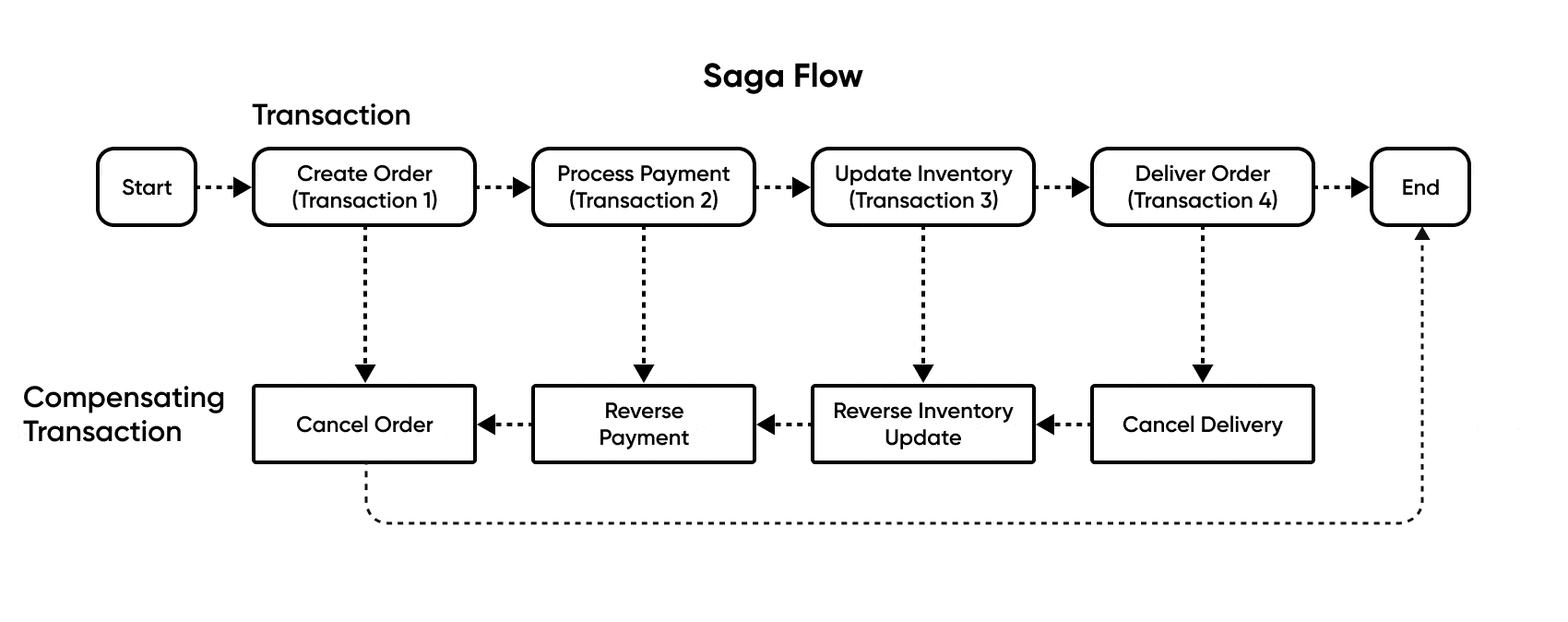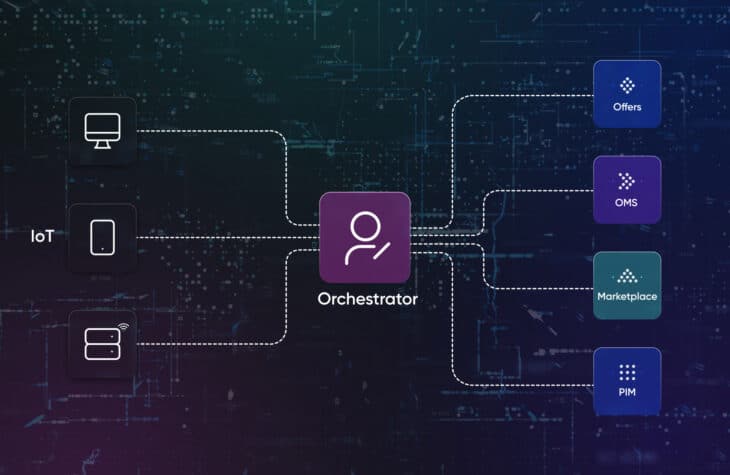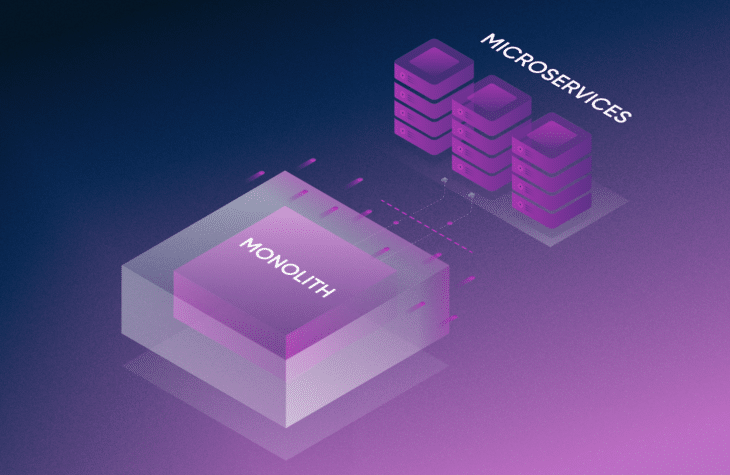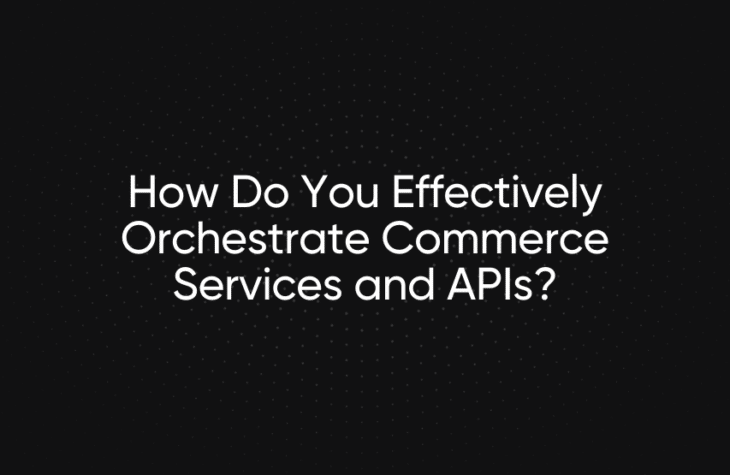API Orchestration Guide: Simplify the Management of E-Commerce APIs
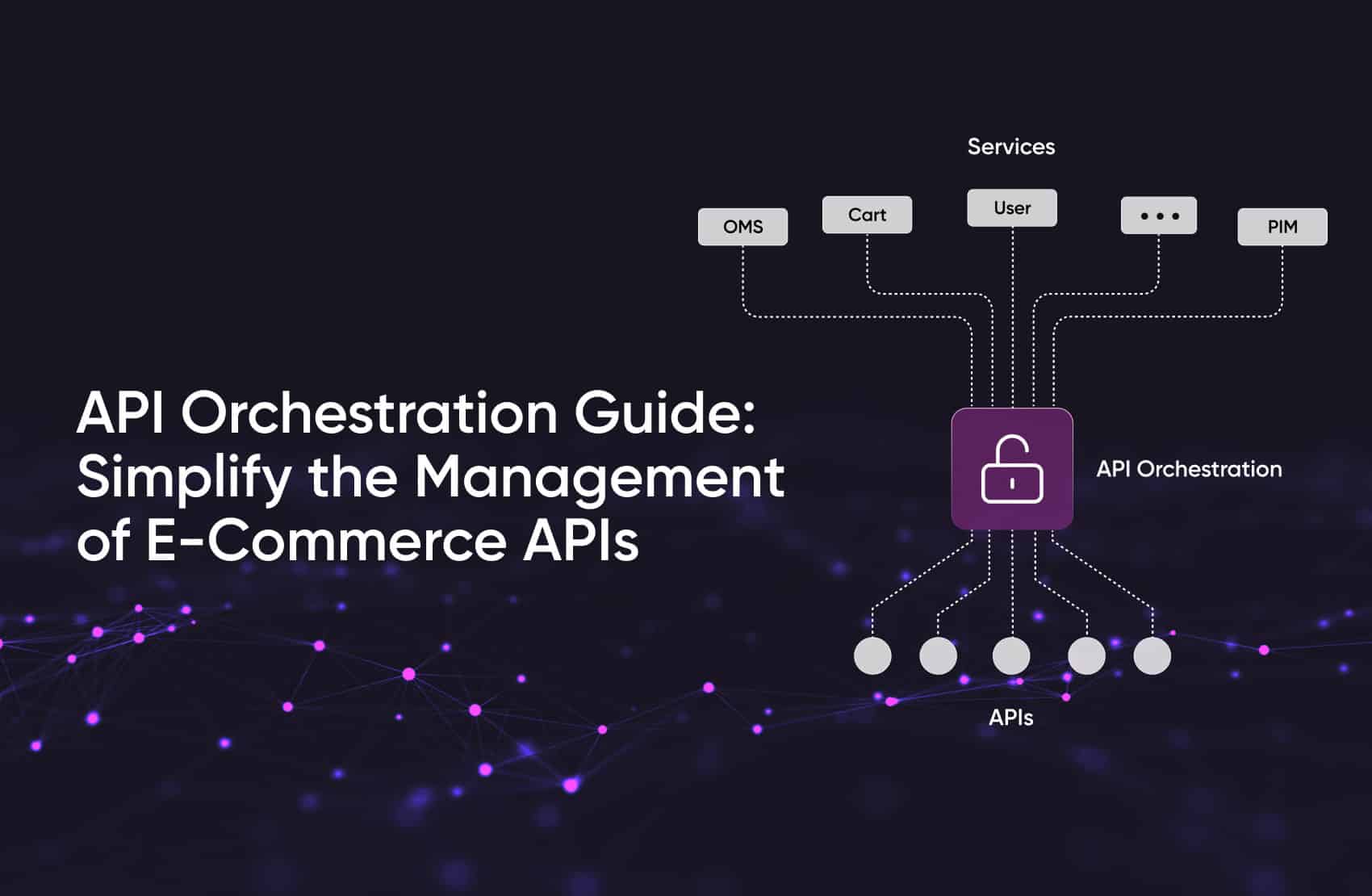
API orchestration consolidates data and services to give you control over your software architecture. It allows you to focus on delivering features and improving your products.
Managing incoming data sources in one place allows for complete customization of your services.
Mid-market and enterprise companies can use API orchestration to power their entire e-commerce ecosystems.
You can deliver your own custom platform using composable commerce. Take a look at fabric Commerce Platform and see how its features give your team a headstart over the competition.
Headless commerce is an e-commerce architecture where the front-end presentation layer of the online store is decoupled from the back-end functionality, allowing for greater flexibility, customization, and scalability. It enables businesses to take advantage of all the features and incoming data sources they want, but managing it all can become overwhelming. If internal developers can’t handle all of the complexity, then flexibility and the ability to add new services are compromised.
API orchestration makes these problems go away, turning your disparate services and data streams into a manageable plug-and-play system. It makes your services play nice and frees your developers to build the solutions your customers want.
What is API Orchestration?
API orchestration is the process of integrating multiple APIs from different sources and reorganizing them into a consolidated set of outputs. The orchestration system involves coordinating the communication and interaction between APIs, as well as managing data flow, security, and other aspects of API integration.
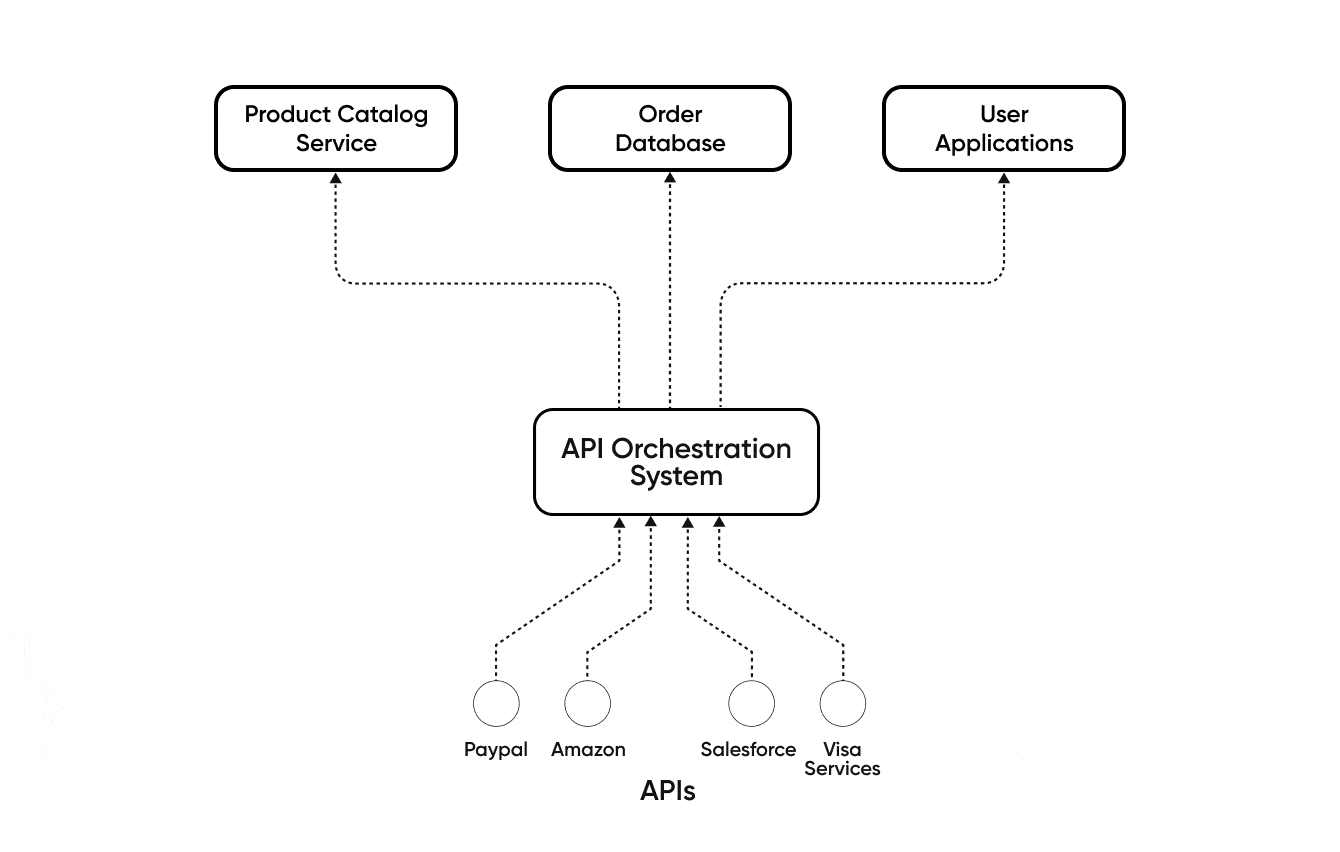
Diagram showing API orchestration system handling inputs from multiple sources and routing them to multiple services
API orchestration is often confused with the term API gateway, but they are not the same thing. An API gateway is a software layer that acts as an entry point for API requests. It is primarily focused on managing the flow of requests between clients and backend services.
API orchestration is the process of integrating and coordinating multiple APIs from different sources into a single, coherent system. While it may use an API gateway as a central point of entry for API requests, API orchestration manages the flow of data between multiple APIs to create a seamless and efficient system.
For example, your frontend services could use a standard format to send payment requests to your orchestration system, which rewrites the requests to match the format required by different payment services with their own APIs.
How API Orchestration Works
Developers are constantly looking for new ways to solve the challenge of making large-scale data management easy. One solution for orchestrating commerce services is to use an event bus/router with Amazon EventBridge. An event router is a component of an event-driven architecture that directs the flow of events or messages between producers and consumers based on predefined rules and criteria.
Often, a transaction needs to access multiple services. This can be achieved by using an event-driven system. Here, each service fires off an event when it completes its work.
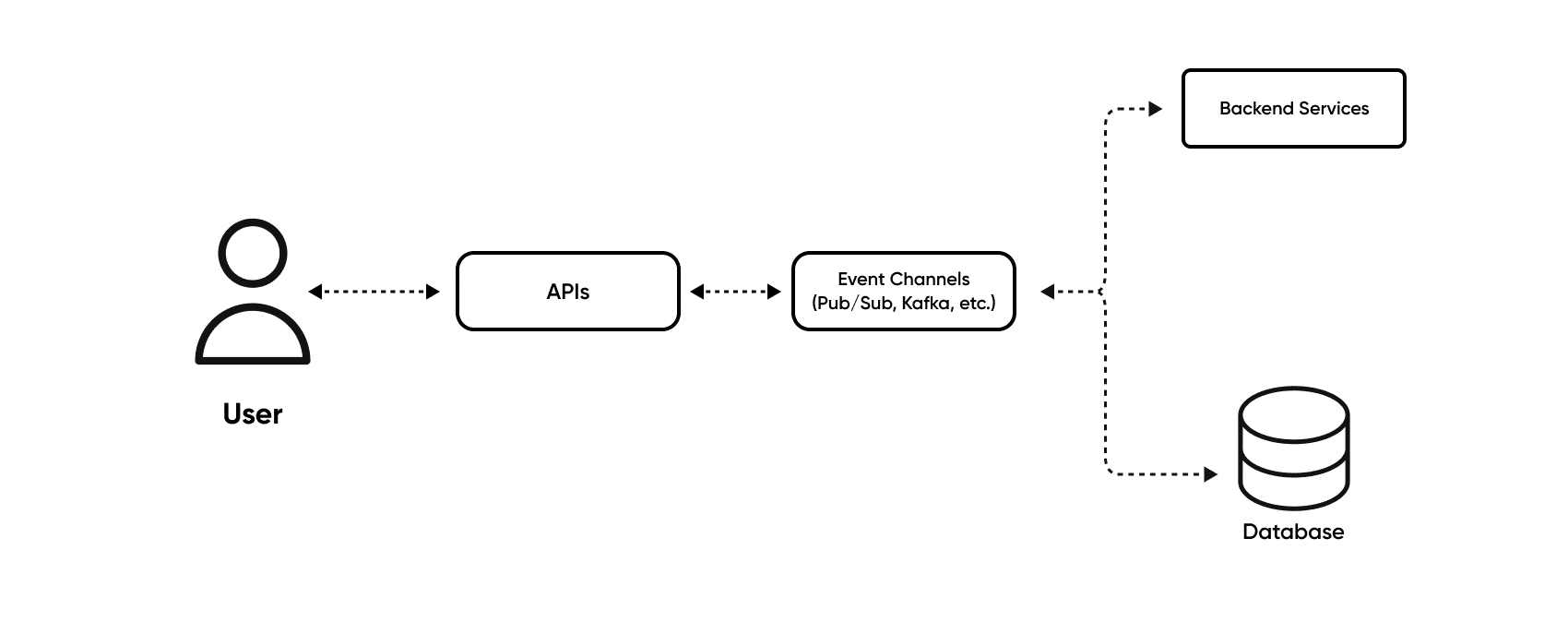
Services that need to activate subsequently listen for this event and respond when they receive it. In this way, different services can work asynchronously to manage the flow of a transaction from start to finish.
An example of this is the saga pattern. The saga pattern is a design pattern used in distributed systems to manage long-running transactions and ensure data consistency by breaking down a complex transaction into a series of smaller, interdependent steps. Here, each stage of the transaction is designed to trigger the next with an event when it completes. You also need a similar system to roll back changes if one of the events fails.
Despite the work on the frontend, the result is that you have complete freedom to select the services you want and control how they interact with one another.
Why API Orchestration is Important
API orchestration makes it simple to access the complex web of APIs your software depends on. Your orchestration layer functions as a single point of contact for your apps and services to go through when they want to access other APIs. Without API orchestration, you have to worry about each of them when implementing a feature or service.
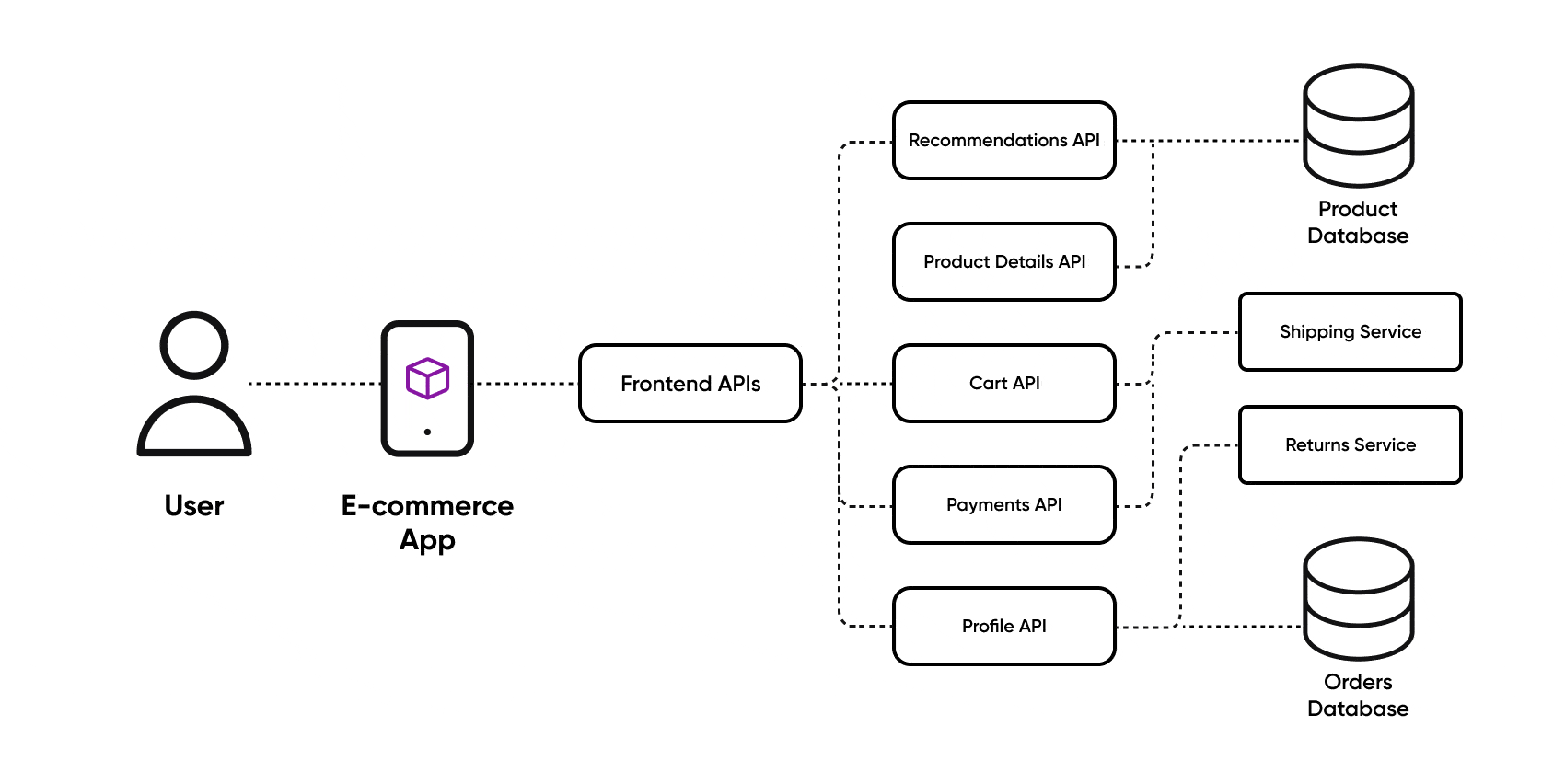
With orchestration, everything is centralized, and that centralization gives you a place to tally metrics and display them together. You can see if anything is going wrong and also create a central alerting system to let you know if any metrics are returning values outside your expectations.
The orchestration layer can include self-healing features to restore failed components to a functional state. According to Microsoft Azure, self-healing requires detecting failures, responding to them gracefully, and logging and monitoring them for operational insight. If requests to a specific API are failing, you can attempt to reset it, perhaps by resending credentials or starting and stopping the service you’re working with.
Orchestration systems can also regulate loads to stop services from becoming overwhelmed. This can be done by blocking or limiting heavy requesters, or by caching responses, easing the burden on the busy service.
For headless commerce architecture in particular, the sheer number of APIs required to build a best-of-breed tech stack can increase significantly. Orchestration ensures that these APIs work together seamlessly, allowing businesses to build complex systems that deliver a superior shopping experience to customers. Additionally, API orchestration enables businesses to quickly adapt to changing market conditions and customer expectations, as they can easily add or remove APIs as needed.
Who Can Benefit from API Orchestration
API orchestration is especially useful to the following groups:
Mid-market and enterprise companies
Simplifying how external services are presented to the individual parts of your own ecosystem is enormously beneficial, and various teams can benefit from this approach. It typically suits large companies that have multiple applications drawing data from a wide range of sources.
For example, larger companies often engage in multichannel marketing and may operate internationally, which means they have to deal with multiple languages and handle orders from multiple fulfillment centers. At this scale, consolidating everything into a simplified system has huge cost benefits.
**Please note:** For smaller companies, the cost of setting up orchestration might not outweigh the benefits, so a cost-benefit analysis should be conducted before moving forward. It depends on how much you use external APIs and how often you need to make changes to the services and applications that make use of them.
Companies with complex products
API orchestration is also especially beneficial to companies that have to weave a particularly complex web of services together, such as e-commerce. Organizations that want highly customized network services can use orchestration to deliver them. It reduces the overheads for adding new features and means API-specific problems are dealt with in one place.
The orchestration platform can take multiple inputs and channel them into common output formats, which can be tuned to the exact needs of the clients and reflect whatever features their various apps need to provide.
Retailers who have an online storefront, as well as mobile apps and various social media offerings, can benefit from this approach. In areas like beauty, home decor, and fashion and apparel, you can provide apps that let users customize their purchases, and these can tie directly into your other services. It gives you control over every function in your system, allowing you to access various APIs using formats designed specifically for you.
Teams needing faster delivery and lower mean time to repair (MTTR)
API orchestration allows you to deliver products more quickly. Once set up, new APIs can be wired into the system with much less developer effort than would otherwise be the case. The orchestration system is already connected to your existing apps, and since common output formats are used, there is no need for them to be replaced. You may want to add additional functionality from time to time, but with an orchestration system, you can plug in multiple data sources and let the system do the work of handling the data.
You also reduce your mean time to repair (MTTR). MTTR is a metric that measures the average time required to fix a system or component after it has failed, taking into account the time to detect, diagnose, and rectify the issue. An API orchestration system allows you to spot errors through its observability and then fix them in one place. You don’t have to go to each of your apps or platform-specific services and fix them one by one.
Netflix uses orchestration to allow its teams complete ownership over the services they work on. That way they can solve problems with them more easily when they occur.
Real-World Use Cases of API Orchestration
There are many potential use cases for API orchestration. Following are some typical examples:
Multichannel pricing management
One of the advantages of moving from a software monolith to a customized approach is you can pipe data to as many sales channels as you need.
Multichannel pricing management using a pricing and promotions engine is much easier if you have a central location to manage the APIs that power such a system. You can create common pricing strategies as well as add regional or channel-specific variations without having to rebuild apps or alter the underlying data sources.
Payment gateways/providers
API orchestration can help businesses offer a seamless payment experience to customers, while also providing the flexibility and control needed to manage multiple payment gateways and providers efficiently.
For example, businesses can monitor, track, and manage payment processing and also switch between payment gateways if one provider experiences issues. They can also offer customers different payment options such as credit card, PayPal, Apple Pay, Stripe, or another solution. These strategies can improve customer satisfaction and reduce the likelihood of cart abandonment due to payment processing errors.
Successful tracking systems
Successful tracking systems can track metrics from all your income data streams and use them to determine if you’re hitting your goals. With the data being managed in one place, it’s easier to create goals and set targets that use multiple data sources.
You can compare them directly and see which services are making the contribution you expect. If you make heavy use of SLOs, API orchestration can give you a large base of data to work with. Meanwhile, by integrating APIs from multiple carriers and shipping providers, businesses can track orders from purchase to delivery and provide customers with accurate and timely updates on their shipments.
Legacy systems integration
Integrating legacy systems is a major headache for large companies whose processes are tightly coupled to old technology. API orchestration can help businesses integrate legacy systems with modern e-commerce platforms, allowing you to keep the old systems around and benefit from what they provide while focusing your current and future efforts on new systems and services.
In time, you can phase the legacy systems out as their role diminishes and/or migrate to a microservices architecture.
Accurate system monitoring
The centralization you get from API orchestration makes it easy to accurately monitor everything in your e-commerce platform. Businesses can collect and consolidate data from various sources, allowing them to monitor their e-commerce systems in real-time.
For example, a business could use API orchestration to monitor website performance, inventory levels, and customer feedback in one centralized dashboard. This would enable them to quickly identify and address any issues that arise, ensuring a seamless customer experience.
Why You Need API Orchestration
Companies that rely on APIs for its operations can benefit from API orchestration. It can streamline workflows, reduce manual intervention, and increase the speed and accuracy of operations.
As a developer working with commerce platforms, there are many ways API orchestration can help you. Some situations where it’s of particular benefit include:
- If you have a large number of partner service APIs you’re getting data from, orchestrating them into a common architecture helps streamline your infrastructure and eases the burden of dealing with multiple information sources.
- Integrating systems creates a need for better data handling, and API orchestration achieves that by ironing out the wrinkles in your data input.
- For large-scale data management, the more input sources you have, the more need there is for a solution to bring it all together. With API orchestration, you can stop worrying about juggling APIs and start focusing on building the product your users need.
In conclusion, API orchestration is a powerful tool for businesses operating in the e-commerce industry. By integrating disparate systems and automating workflows, businesses can improve efficiency, reduce costs, and improve the customer experience. With a range of products and services available, API orchestration is an accessible solution for many modern businesses. As the e-commerce industry continues to grow and evolve, API orchestration will likely become even more important for staying competitive and agile in a rapidly changing landscape.
Tech advocate and writer @ fabric.
